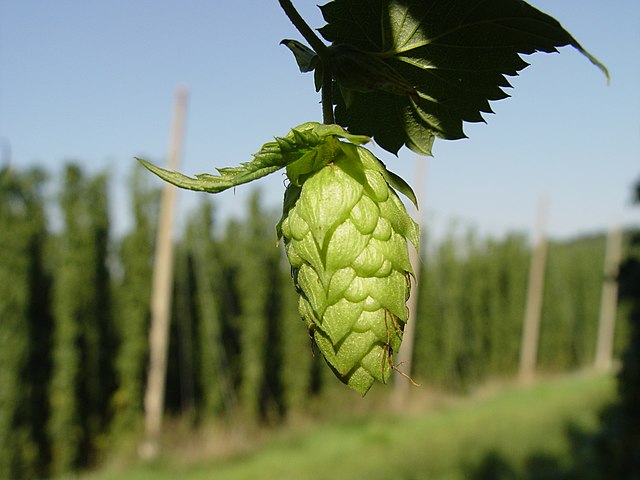Easy Drinking Summer Beers for BBQ Season
Part 1 of Our 3-Part Summer Series
By Mike De Smidt and Greg Roe
The Mountain Fermenter team is eagerly preparing for summer and the opportunity to enjoy communal gatherings once again. This 3-part series will discuss the wonderful world of fermented food and beverages and how you can craft them and add to your next outdoor feast. In part one, we talk about a great beer option to take the edge off the summer heat that pairs great with BBQ. In parts two and three, we’ll discuss how to create and add fermented sides and condiments to your arsenal of grilled and smoked goodies.
The Days of the Lawnmower Beer
While we don’t necessarily suggest operating power tools, especially those with rotary blades, while drinking alcohol, there is a group of beers that can be described as perfect “lawnmower beers” to tag along with our summer activities and chores. The beers that immediately come to mind for this would be your ubiquitous American lagers, a la Bud, Miller, or Coors. However, we suggest expanding your horizons and homebrewing some of the beer styles that originally influenced these big American breweries, such as German lagers Helles and Kölsch. These beers are flavorful and easy drinking, and a perfect pairing to wash down a meal on a warm summer day. Brewing lagers like Helles can be a little tricky without temperature control for fermentation, but Kölsch, one of the few German Ale varieties, is more approachable for the majority of homebrewers.

Origins of Kölsch
Versions of this golden ale have been brewed in the western German city of Cologne (Köln) for centuries, but the style as it exists today came about more recently, with the name Kölsch only in regular use since 1918. In fact, one need only ask for “a beer” when in Cologne, as this is pretty much the only option in town. Like Champagne in France, the name Kölsch is a protected appellation and can only be used in the EU by breweries within 30 miles of Cologne. It is a clear golden-colored beer, 4.2-5.2% ABV, with moderate to light hop bitterness and aroma, and a crisp, dry finish. It is traditionally served in a tall skinny 200ml (~7 oz) glass called a Stange (pronounced “Schtang-uh”). Unlike many ales in the world, Kölsch is briefly put into cold storage following fermentation, a process called lagering. It is traditionally served out of 10L or 90L casks that are either stainless steel or pitch-lined wood. The beer is then poured from the cask into a circular, tiered serving tray of Stanges while being spun. It is quite the sight to behold.
Recipe for Kölsch
Brewing a Kölsch is a fairly straightforward job, but you’ll want to pay special attention to the yeast strain used as well as your fermentation temperature, which is slightly cooler than a typical ale (62-64 F vs 68-70 F). Due to the lower fermentation temperature, we recommend you use more yeast to avoid off flavors and the yeast stalling out.
Extract Recipe for 5 Gallons:

Original Gravity – 1.046
Target Final Gravity – 1.008-1.010
ABV – 4.8%
6 lbs of liquid pilsner extract
(Optional) Steep 0.5 Lbs of Munich or Vienna Malt at 150F for 30 minutes prior to adding extract
1 oz of Hallertauer hops (boil for 60 minutes)
2 packs of a Kölsch yeast strain: White Labs WLP029, Wyeast 2565, Imperial G03 “Dieter”
All-Grain Recipe for 5 Gallons:
Original Gravity – 1.046
Target Final Gravity – 1.008-1.010
ABV – 4.8%
9 lbs of a good quality Pilsner malt
0.5 lbs of Vienna malt
1 oz of Hallertauer hops (boil 60 minutes)
2 packs of a Kölsch yeast strain: White Labs WLP029, Wyeast 2565, Imperial G03 “Dieter”
Coming Up Next Issue
With your thirst slaked, the next issue of the Mountain Fermenter will describe how to make fermented condiments to go along with some of our favorite BBQ dishes.
Ben Lomond local, Mike De Smidt has been home brewing for 12 years and is a BJCP Certified Beer Judge.
Greg Roe is a Felton local who has been a home brewer for 20 years and is a self proclaimed Fermentation Geek.
Featured photo of a German Lager by Oliver Van Leeuwen
The San Lorenzo Valley Post is your essential guide to life in the Santa Cruz Mountains. We're dedicated to delivering the latest news, events, and stories that matter to our community. From local government to schools, from environmental issues to the arts, we're committed to providing comprehensive and unbiased coverage. We believe in the power of community journalism and strive to be a platform for diverse voices.





